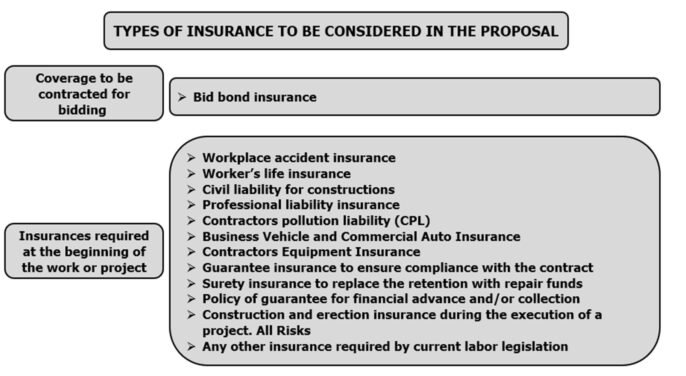 How to Calculate Work Hours and Calculation of Overtime Pay? A comprehensive guide to calculating hours worked on construction projects, including examples of overtime calculations. Tables for calculating hours worked on a construction project. Weekly hours calculator.
How to Calculate Work Hours and Calculation of Overtime Pay? A comprehensive guide to calculating hours worked on construction projects, including examples of overtime calculations. Tables for calculating hours worked on a construction project. Weekly hours calculator.
How to Calculate Work Hours?
The process of measuring the consumption of man-hours or fractions of man-hours required to perform a task requires defining the conditions under which we perform the measurement.
The above ensures that duplication can support the measure.
They are defined as standard requirements.
Note that both actual work time and normal noncontributory time are included in the time required to complete a task.
Calculation of Man-Hour Costs for Construction Projects – Standard Conditions
Standard Conditions.The total labor hours calculated using the records in the tables are valid only when the project is performed under conditions similar to those that occurred at the time the performance measurements were taken.
As each project differs from another, we need to adjust the total count of work hours for mathematical calculations, taking into account factors that consider the influence of the specific conditions prevailing in each project.
Summarizing:
First, the estimating team must have reliable records of the number of man-hours required to complete each task.
Next, based on the number and type of tasks to be performed on the project, we calculate the number of man-hours mathematically. This calculation is done by applying the performance recorded in the tables to each task.
Furthermore, estimators or their advisers must have complete information regarding the conditions under which each project will be carried out.
The proponent needs the aforementioned estimate for mathematical calculations.
Features of project cost management
Features of project cost management. We will provide you with essential information on the features of project cost management, including:
- The tender documents.
- The information gathered during the site visit.
- The consultation with the purchaser.
Then, in the next step, we must define the correction factors that we will apply to the total count of work hours calculated mathematically for each job.
We then assess the direct labor hours required for each specialty, and using the job times data, we determine the number of workers needed.
In summary, for this task, the estimator relies on the drawings, material calculations, performance record tables, and most importantly, their experience and input from specialists.
In general, each contractor has already established the cost of man-hours for the normal time of each worker category.
This cost varies depending on their specialty and includes labor clothing, safety features and a toolbox, where applicable.
How to Calculate Work Hours – Overtime
Overtime results in a significant increase in direct labor costs. We must take this into consideration in the estimate.
Working overtime can be gratifying for the employee, but it is important to note that being paid by the hour with a 50% premium does not necessarily increase the employee’s output by 50%. In fact, the excessive length of the working day can actually reduce the average output of the worker.
The difference above is even more pronounced for hours paid at 100%.
Despite the above, companies in the construction industry typically work more than 8 hours a day, Monday through Saturday. In addition, they may require all or some of their employees to work on Sundays and holidays.
Reasons for working overtime – Calculate hours worked
Reasons for working overtime – Calculate time worked. We should note that the employer plans to perform the work with extended working hours for two main reasons:
First of all, the employer has to offer the worker an attractive salary, because the continuity of the job is only guaranteed in the project he joins. In addition, the project location is often far from the worker’s home.
Second, the employer must increase the number of hours calculated to perform the tasks due to the decrease in effective working hours that occur daily due to operational issues such as:
- To counteract the time lost due to the daily mobilization and demobilization of the worker with his tools from the workshop to the construction site.
- The construction site is often far away from the workshop, or may be above the ground, etc.
- To compensate for the downtime that occurs during the approval of work permits, etc.
Other situations that cause additional hours to be spent beyond those calculated to complete a task include:
- On jobs where there are significant penalties for failure to meet construction deadlines, it is often necessary to work overtime to ensure the timely completion of the work and to avoid incurring penalties.
- Restoration or expansion of existing work facilities with urgent delivery schedules (generally in architecture and construction) require piecework until completion. The hourly cost of overtime is higher than the calculated rate.
- Jobs that require specialized personnel that are difficult to find in the labor market are often a challenge. When there are fewer workers available for a job than originally planned, it becomes necessary to work more overtime than anticipated in order to meet construction deadlines.
A picture of workers receiving their wages
Photo of workers receiving their wages. The image below depicts a group of workers patiently waiting to receive their paychecks.

It is important to note that each country has its own labor laws. These laws include the following:
- What is the standard number of work hours per week that the employer is required to pay under the local labor law?
- What is the maximum number of overtime hours allowed per day, month, and year?
- When do you pay 50% and 100% overtime?
It should be noted that, regardless of the labor legislation, it is usually the approved collective bargaining agreements of the unions that ultimately determine the number of hours worked per week and how overtime is paid.
The conditions laid down in these agreements must be more favorable to the worker than those provided for by national legislation.
Work Hours Calculator for Construction Projects
How to Calculate Work Hours and Calculation of Overtime Pay
Overtime Calculator: How Overtime Affects Man-Hour Costs. Weekly Hours Calculator.

Calculating Work Hours – Hypothetical Calculation of the Effect of Overtime
Hours Paid Weekly—Weekly Hours Calculator
Hours Paid Weekly—Weekly Hours Calculator. Assumptions for the weekly hours calculator:
- Weekly hours calculator. We assume that the maximum number of standard hours per week is 40 in the region known as X.
- Weekly Hours Calculator: Overtime is paid at the rate of 50% for each hour worked in excess of regular hours Monday through Friday and until 1:00 p.m. on Saturday.
- Weekly Hours Calculator: Hours worked on Saturdays after 1:00 p.m., Sundays and holidays are paid at 100%.
The percentage increase in the incidence of overtime at hourly cost is the ratio of the cost of hours paid to hours worked per week multiplied by 100.
Therefore, if the workday starts at 8 a.m. and we work 10 hours Monday through Saturday, we have:
Weekly Hours Calculator:
- 1) From Monday to Friday we work 10 hours a day for a total of 50 hours.
- 2) This is 10 hours more than the normal 40 hours, so we paid 50% for the extra 10 hours, which is equivalent to 15 hours in normal time (assuming the normal maximum number of hours worked per week is 40).
- 3) On Saturday they worked 10 hours. We paid for 5 hours until 13:00 at 50% overtime. We have to pay the remaining 5 hours at 100% overtime, which comes to a total of 17.5 hours when converted to regular hours.
- Total time paid: (sum of points 1 to 3), equals 40 + 15 + 17.5 = 72.5 hours.
Weekly Hours Calculator
Hours worked per week: Monday to Saturday = 10 hours * 6 days equals 60 hours worked.
Total time paid: 72.5 hours.
The percentage increase in the cost of worker man-hours is:
[72.5/60] * 100 = 120.83%
The extra cost for overtime work is 20.83 percent.
This is a significant addition. It should be reported to the company’s accountant, who will determine the direct labor cost for this project.
Read the following article about how to reliably assess the equipment chosen for project cost management.
Check the next post How to calculate direct hours worked.
How to Calculate Work Hours and Calculation of Overtime Pay


